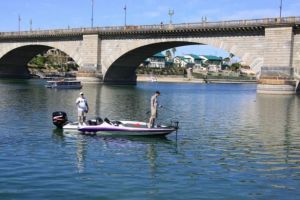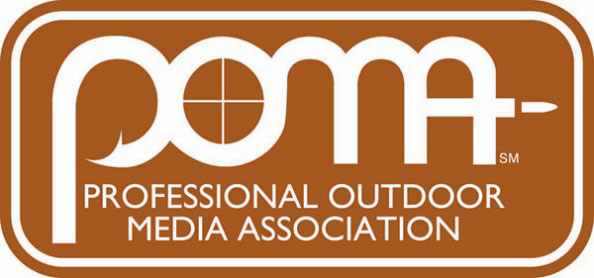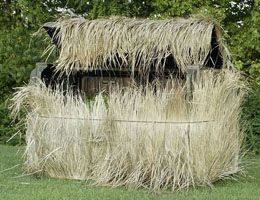Fishing is busting loose – it’s time to get out
Fishing is busting loose – it’s time to get out
Grab your poles — it’s time to get out fishing.
“This is the first week of spring, there is a full moon on Monday, March 29, and thanks to lots of runoff and nutrient loading, the fishing at Arizona’s desert lakes is really turning on. This is also the leading edge of the good trout fishing season,” said Rory Aikens, who compiles the weekly fishing report for the Arizona Game and Fish Department.

If you want to learn techniques for catching fish, especially in the warmwater lakes, come to the Game and Fish Outdoor Expo this weekend and visit the “Demo Fishing Tank” where local experts will share their secrets. Aikens will also be on hand at the Demo Tank to answer your “Where to” fishing questions.
The Outdoor Expo is Saturday and Sunday, March 27-28 at the Ben Avery Shooting Facility on Carefree Highway just west of Interstate 17.
Here is a quick run down on the fishing hot spots.
Desert Lakes
* Lake Pleasant is the hot spot. Post-spawn striped bass are feeding aggressively. Largemouth bass are spawning. White bass are just finishing their spawn.
* Roosevelt Lake is turning on for largemouth bass and smallmouth bass. Crappie should start spawning any time (probably this weekend). Carp are spawning. Due to exceptional runoff, Roosevelt is very turbid. This should be a superb fishing year at Rosy. Don’t miss out.
* Bartlett Lake is heating up for bass and crappie. Don’t ignore the flatheads. On any given day, this can be the fishing hot spot.
* Saguaro Lake is good for 1- to 2-pound largemouth bass, some nice yellow bass and large channel catfish.
* Canyon Lake is tougher to fish, but is the land of the lunkers. Catch rates are typically low, but you might just land a new state record bucket mouth.
* Alamo Lake has been challenged with fluctuating waters levels, but crappie are spawning and largemouth bass action is picking up almost daily. Don’t ignore the plentiful channel catfish.
* Apache Lake is picking up for largemouth bass, with some nice smallmouth being caught. But if you want walleye, this is the place; a 9-pound walleye was caught recently.
* Havasu Lake is very good for spawning largemouth and smallmouth bass, and striped bass fishing should be picking up as well.
* Mead and Mohave are both a little slow yet, but striped bass action should pick up soon. Largemouth bass are starting to spawn in the more shallow, protected coves. The water level at Mohave is very good, but Mead is very low.
* Lake Powell is slowly turning on. This is shaping up to be a stellar fishing year. The spring fishing can provide some of the best action in the West for striped bass, smallmouth bass and walleye.
* Martinez Lake along the lower Colorado River near Yuma is another hot spot for largemouth bass, but it is a little early for good striped bass action.
Trout waters
* The Lower Salt River near Phoenix has been running pretty high, but the deparment is stocking it with rainbow trout again. Expect the higher flows to continue as snow melts in the high country.
* The spawn for wild rainbow trout at Lees Ferry in northern Arizona is underway. This renowned fishery in Marble Canyon provides world-class action.
* Oak Creek, the Verde River, Burro Creek and West Clear Creek are all running a little high to stock with trout right now, but once they settle down you’ll want to give them a try.
* The creeks below the Mogollon Rim are scheduled to be stocked with rainbow trout the first week of April. These include Christopher Creek, Tonto Creek, Canyon Creek, the East Verde River, and Haigler Creek.
* Fain, Lynx and Goldwater lakes in the Prescott area have already been stocked this season, and are scheduled for additional stockings soon.
* Although it might be May before snow melts and the higher trout lakes become accessible, early bird specials include Becker Lake, Fool Hollow, Show Low Lake, Scotts Reservoir, Woodland Reservoir and Rainbow Lake in the White Mountains.
* Keep watching the reports for the Williams area lakes, they are scheduled for stocking the first week of April. Kaibab and Cataract should be accessible. Dogtown requires a quarter-mile walk through snow. Whitehorse is not accessible yet, but snow melt is underway.
* Anglers are catching limits of trout at Parker Canyon Lake. Pena Blanca is now full and the department is actively stocking it with trout – but there isn’t a usable boat ramp. Rose Canyon is scheduled for stocking the second week of April.
* Lower Lake Mary near Flagstaff has been stocked with small rainbow trout, but the fish will grow quickly. It won’t take long before this is a trout fishing hot spot in Arizona.
* Along the Colorado River, Willow Beach below Hoover Dam is stocked with rainbow trout. This is a good place to escape the crowds, fish in pleasant weather, and catch ‘bows in the lower Mohave desert. You might even see desert bighorn sheep.
“The higher elevation trout lakes, such as Woods Canyon and Big Lake, might not be accessible until late April or even early May, but due to tremendous snow pack this year, the high country trout fishing outlook is superb. Watch our reports – we’ll keep you informed as the season progresses,” Aikens promised.
In addition, the Urban Program lakes were stocked this week with channel catfish weighing from 1 to 2 pounds – those are some quality fish.
Visit www.azgfd.gov for the weekly fishing report and stocking schedules.
Posted on 31st March 2010
Under: Fishing, Press Releases | No Comments »












